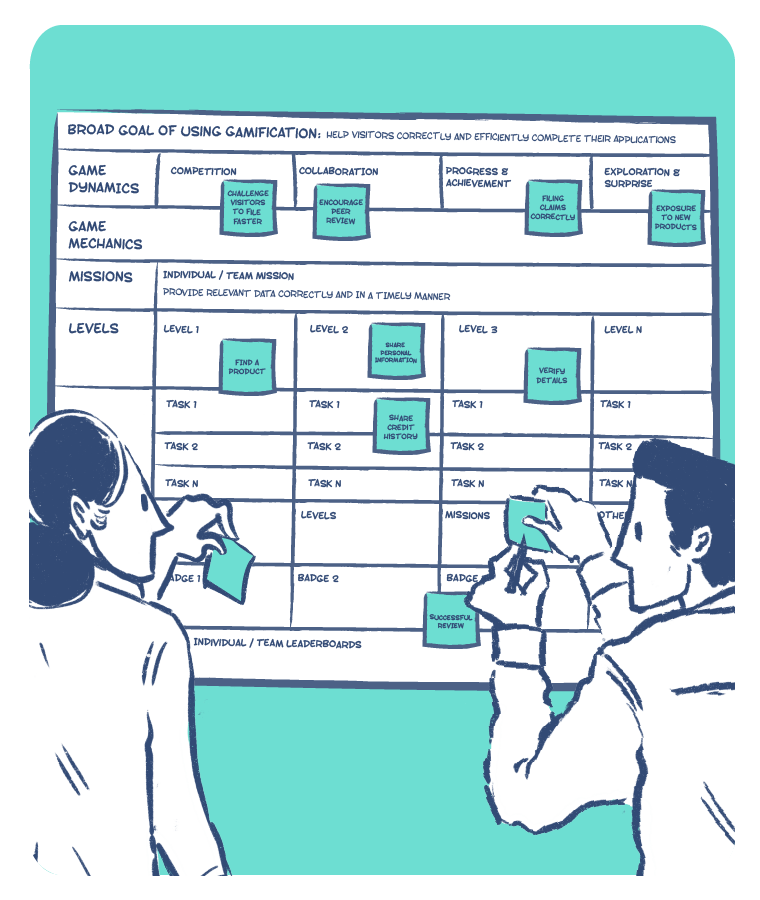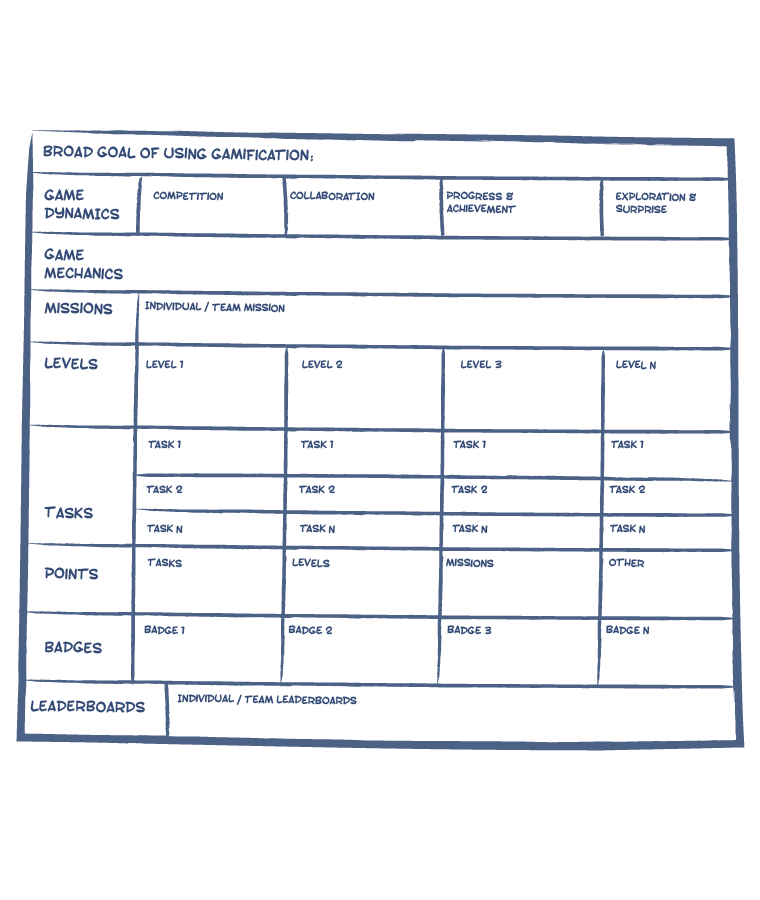BEHAVIOUR DESIGN | TOOLS
Gamification Board
60-90 Min
Gamification is a concept that borrows from techniques that game designers use to engage players. It applies the same kind of approach to non-game experiences — to motivate and engage users. The Gamification Board is a tool that helps designers think through the application of gamification principles as part of their product or service experience.
USE CASES
- Create a new service or product experience with gamified elements as a way to differentiate experience.
- Introduce gamification as a part of the current product or service experience as a way to improve engagement.
- Note: The Gamification Board is a starting point for actual gamified elements to be designed, and tested as prototypes - It is in a sense a planning and scoping tool.
LIMITATIONS
Gamification is often looked at as a comprehensive answer to all customer engagement needs. However, it is only one type of approach, and should be used sparingly and thoughtfully. Gamification does not guarantee better customer engagement, especially if the core value proposition and experience are weak.

